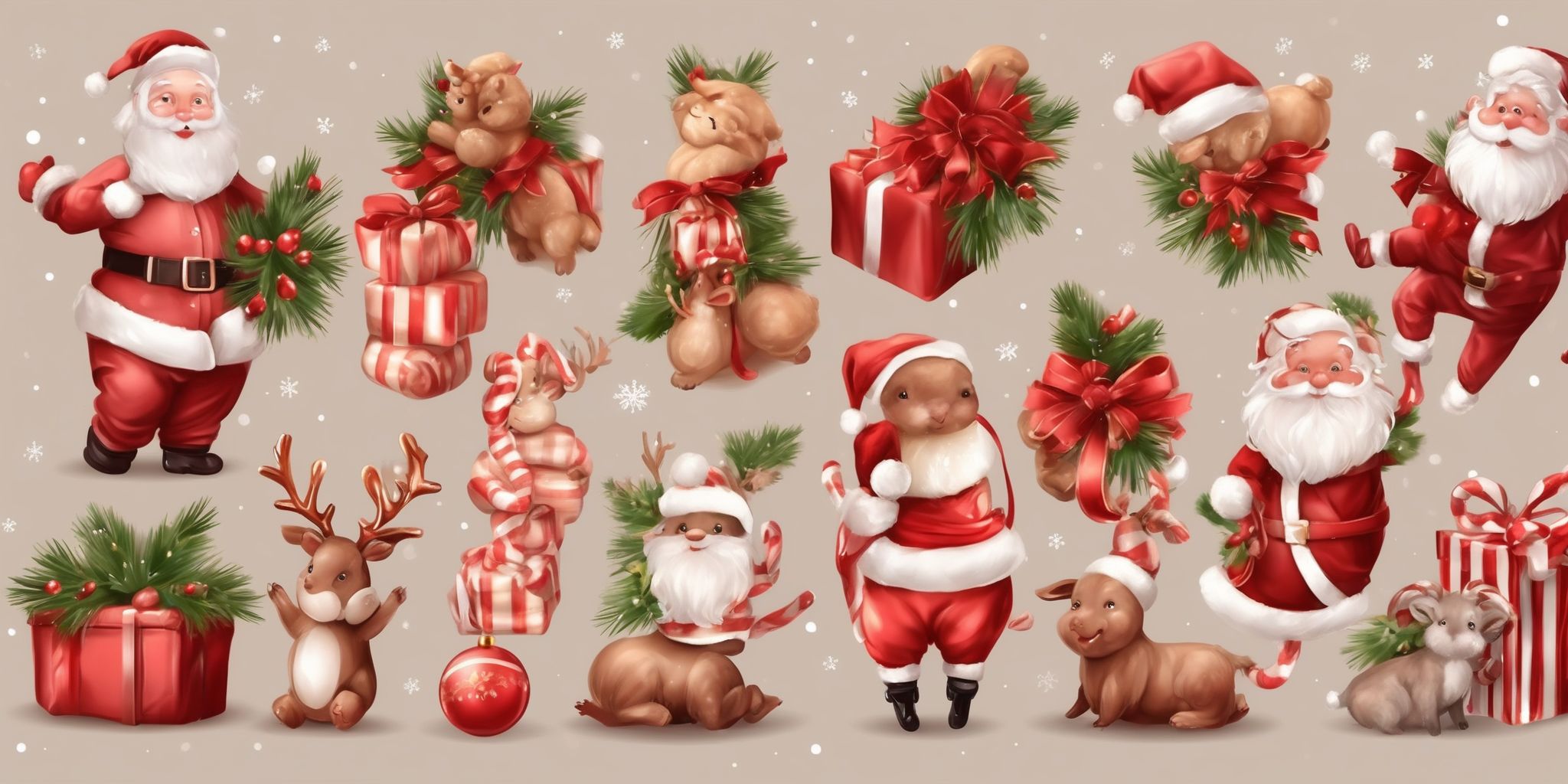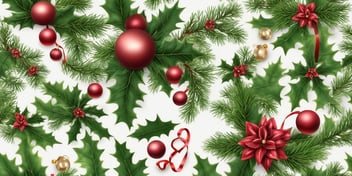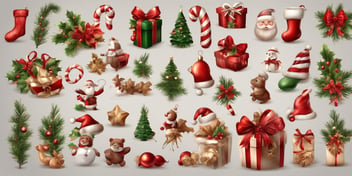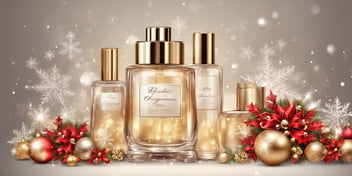- Blog
- Christmas trees
- Discovering Different Kinds of Christmas Trees: Which One is Right for You?

'Tis the season to be jolly! With the holidays right around the corner, it's time to embark on the annual Christmas tree hunt. Every year, millions of households around the world eagerly set out to find the perfect evergreen centerpiece for their festivities. But which tree will be the star of your living room this year? From the regal and aromatic to the unconventional and charming, the world of Christmas trees is vast and exciting.
Unwrap your curiosity as we venture into a pine-scented wonderland, discovering the various kinds of Christmas trees that await, each with its own unique appeal. Get ready to deck your halls in style and embrace the holiday spirit like never before!
Real vs. Artificial Christmas Trees
Pros and cons of real Christmas trees
Real Christmas trees have their own set of pros and cons. One advantage is the natural beauty they bring to your home, creating a festive and authentic atmosphere.
Additionally, the fresh scent of a real tree can enhance the holiday experience. However, real trees require regular watering to maintain their freshness and prevent needle drop. They can also pose a fire hazard if not properly cared for. On the other hand, artificial trees are more convenient as they don't require maintenance and can be reused. Consider your preferences and lifestyle before selecting a real Christmas tree.
Pros and cons of artificial Christmas trees
Artificial Christmas trees offer convenience and durability as key advantages. They require minimal maintenance and can be reused for several years, saving money in the long run. Additionally, they eliminate the need for watering, reducing the risk of fire hazards. However, some drawbacks exist. Artificial trees lack the natural scent and texture of real trees, diminishing the authentic holiday experience. Moreover, disposal can be a challenge, as they are made of non-biodegradable materials. Consider these factors when deciding on an artificial tree, weighing the ease of use against the desire for a traditional ambiance.
Popular Christmas Tree Varieties
Douglas Fir
The Douglas Fir is a popular choice among Christmas tree enthusiasts. Its lush, soft needles and pleasant fragrance make it a favorite for many households. This tree variety is known for its excellent needle retention, which means you won't have to worry about constantly vacuuming up fallen needles. The Douglas Fir also has sturdy branches, perfect for hanging all your cherished ornaments. Its classic cone shape adds a traditional touch to your holiday decor.
Characteristics of Douglas Fir
Douglas Firs are a popular choice for Christmas trees due to their attractive features. These trees have soft, dark green needles that radiate a sweet scent, creating a festive ambiance in your home. Known for their conical shape and full branches, they provide ample space for hanging ornaments and lights. The sturdy branches also make them suitable for displaying heavier decorations.
Additionally, their excellent needle retention helps keep your tree looking fresh throughout the holiday season, requiring less maintenance. With their characteristic appeal and practicality, Douglas Firs are a reliable option for creating a joyful and aesthetically pleasing Christmas atmosphere.
Advantages and disadvantages of choosing a Douglas Fir
- Advantages:
- Beautiful and symmetrical shape, with soft, dark green needles.
- Excellent needle retention, making it less messy compared to other varieties.
- Pleasant fragrance that adds to the festive ambiance.
- Suitable for hanging heavy ornaments due to sturdy branches.
- Disadvantages:
- Price can be higher compared to some other options.
- The sharp needles may cause irritation for sensitive individuals.
- Its dense branches can make it challenging to hang larger ornaments or string lights.
Fraser Fir
The Fraser Fir is a popular choice among Christmas tree varieties. It is known for its dense branches and needle retention, making it a great option for those who want a tree that looks full and fresh throughout the holiday season. The Fraser Fir also has a pleasant fragrance that adds to the festive atmosphere in your home. Its sturdy branches can support heavier ornaments, making it suitable for those who love to decorate their trees with a variety of decorations.
Characteristics of Fraser Fir
Fraser Fir is a popular choice among Christmas tree enthusiasts due to its desirable characteristics. Here are some key features of Fraser Fir:
- Dense and symmetrical shape, making it visually appealing.
- Soft, dark green needles with a silver underside, giving the tree a vibrant and elegant appearance.
- Excellent needle retention, reducing the mess and maintenance associated with shedding needles.
- Pleasant fragrance that fills the air with a refreshing scent of pine.
- Strong branches capable of supporting heavy ornaments.
- Widely available at local tree farms and nurseries, ensuring accessibility for many consumers.
Consider these characteristics when choosing a Christmas tree, as the Fraser Fir brings both aesthetic beauty and practicality to your holiday decor.
Advantages and disadvantages of choosing a Fraser Fir
One advantage of choosing a Fraser Fir as your Christmas tree is its excellent needle retention. The sturdy branches of the Fraser Fir hold the needles in place for a longer duration, reducing the mess and daily clean-up.
Additionally, Fraser Firs have a pleasant aroma that adds to the festive ambiance of your home. On the downside, Fraser Firs tend to be slightly more expensive compared to other varieties. However, the benefits of its needle retention and fragrance make it a popular choice among many Christmas tree enthusiasts.
Balsam Fir
Balsam Fir is a popular choice when it comes to Christmas trees. Its dense, dark green needles and pleasing aroma make it a favorite among many. Balsam Fir trees are known for their symmetrical shape, which provides an elegant and balanced look for holiday decorations. These trees have good needle retention, meaning they are less likely to shed excessively.
Additionally, Balsam Fir trees have sturdy branches that can support heavier ornaments. Its attractive features and durability make Balsam Fir a reliable option for those seeking a traditional and visually appealing Christmas tree.
Characteristics of Balsam Fir
Balsam Fir trees are known for their attractive dark green color and pleasing fragrance. Their needles are soft and flat, making them less prickly compared to other Christmas tree varieties. Balsam Firs have excellent needle retention, maintaining their freshness throughout the holiday season. These trees also have a conical shape with dense foliage, providing a full and lush appearance.
Due to their desirable characteristics, Balsam Firs are a popular choice for families looking to create a traditional and festive ambiance in their homes during the holiday season.
Advantages and disadvantages of choosing a Balsam Fir
Choosing a Balsam Fir as your Christmas tree has its advantages and disadvantages. On the positive side, Balsam Firs have a beautiful natural shape and lush foliage, making them visually appealing. They also emit a pleasant fragrance that fills the room. However, one drawback is their needle retention, which is not as excellent as other varieties. This means you may experience more needle drop throughout the holiday season.
Additionally, Balsam Firs can be slightly more expensive compared to some other types of trees. Consider these factors when deciding if a Balsam Fir is right for you.
Blue Spruce
Blue Spruce is a popular choice among Christmas tree varieties. Known for its distinctive silver-blue needles, it adds a unique touch to holiday decorations. The stiff branches of the Blue Spruce make it sturdy, making it suitable for hanging heavier ornaments. However, its sharp needles can be prickly to handle and may not be the best choice for households with young children or pets. Blue Spruce trees have excellent needle retention, keeping them looking fresh throughout the holiday season.
Consider the Blue Spruce if you prefer a tree with a striking color and robust branches for showcasing your cherished decorations.
Characteristics of Blue Spruce
Blue spruce trees are known for their unique silver-blue needles, which give them a distinct appearance. These needles are sharp and prickly, making the tree less appealing to pets and curious toddlers. Blue spruce trees also have a strong fragrance, filling your home with the pleasant scent of winter. These trees tend to have a strong branch structure, making them ideal for heavier ornaments that won't easily weigh them down.
The blue spruce is a popular choice for those who prefer a tree witha more traditional look and a touch of uniqueness.
Advantages and disadvantages of choosing a Blue Spruce
One advantage of choosing a Blue Spruce as your Christmas tree is its stunning silvery-blue foliage, which adds a unique and eye-catching touch to your holiday decor.
Additionally, Blue Spruces tend to have strong branches that can support heavier ornaments. However, it's important to note that Blue Spruces have sharp needles, which can be prickly and may cause irritation to sensitive skin. Furthermore, these trees have a strong fragrance that some individuals may find overpowering. Consider these factors when deciding if a Blue Spruce is the right choice for you.
Alternative Options for Christmas Trees
Potted Trees
Potted trees offer an alternative option for Christmas decorations. These smaller, live trees come in various species like spruce or fir, offering a charming and eco-friendly choice. One advantage is their versatility, as potted trees can be planted outdoors after the holiday season. However, they require proper care and watering to ensure survival. Potted trees are suitable for those with limited space or who want to enjoy a living tree year-round.
Keep in mind that they may have limited needle retention compared to cut trees, so regular watering is crucial for maintaining their appearance throughout the festivities.
Advantages and disadvantages of choosing potted trees
Advantages of choosing potted trees include their potential for replanting after the holidays, allowing you to enjoy them for years to come. They are also generally easier to transport and set up compared to traditional cut trees.
Additionally, potted trees can contribute to indoor air quality by releasing oxygen and removing certain pollutants. However, they may require more care and attention, such as regular watering, and can be heavier and more difficult to decorate due to their root ball. Consider potted trees if you prefer a sustainable option and are willing to put in a little extra effort for long-term benefits.
Flocked Trees
Flocked trees are a unique and popular type of Christmas tree. Here's what you need to know about them:
- Flocked trees are coated with a layer of artificial snow or flocking material, giving them a snow-covered appearance.
- They add a touch of elegance and winter wonderland charm to any holiday décor.
- Flocked trees are available in various colors, including white, silver, and even pastel shades.
- They can be pre-lit or plain, allowing you to choose the level of customization you prefer.
- Flocked trees are perfect for those who want a hassle-free tree that doesn't shed needles.
- While they may require more delicate handling to preserve the flocking, they offer a unique and beautiful alternative to traditional trees.
Remember to consider your overall décor theme and personal preferences when deciding on a flocked tree.
Advantages and disadvantages of choosing flocked trees
Flocked trees, with their artificial snow-like coating, offer a unique and picturesque look for Christmas. One advantage is that they save you from the hassle of decorating. The flocking adds a snowy effect without the need for additional ornaments or lights. However, it's important to consider that flocking can shed over time, leaving traces of artificial snow on your floor.
Additionally, the process of flocking can make the branches brittle, causing them to break more easily. Consider your desired aesthetic and the potential for clean-up before choosing a flocked tree.
Considerations for Choosing the Right Christmas Tree
Size and Space
When considering the size and space for your Christmas tree, there are a few factors to keep in mind:
- Measure the height of your ceiling to ensure the tree will fit without touching it.
- Consider the width of the tree to ensure it doesn't overcrowd your living space.
- Take into account the available floor space for the tree stand.
- Remember to leave enough room for holiday decorations around the tree.
- If you have limited space, opt for a smaller tree or consider alternative options like tabletop trees or slim varieties.
By considering the size and space available, you can choose a Christmas tree that fits perfectly into your home without overwhelming the area.
Fragrance and Aesthetics
Fragrance and aesthetics are important factors to consider when choosing a Christmas tree. The scent of a real tree can evoke the holiday spirit, filling your home with a natural and inviting aroma. Varieties like Douglas Fir and Balsam Fir are known for their pleasant fragrance.
Additionally, the visual appeal of a tree contributes to the overall atmosphere. Different species offer unique characteristics, such as the fullness of a Fraser Fir or the silver-blue hue of a Blue Spruce. Consider your personal preferences and the desired ambiance when selecting a tree that matches your aesthetic taste.
Needle Retention
When selecting a Christmas tree, considering its needle retention is important. Different tree varieties have varying abilities to retain their needles throughout the holiday season. Trees such as the Fraser Fir and Balsam Fir are known for excellent needle retention, making them ideal choices for families looking for minimal cleanup. On the other hand, trees like the Blue Spruce tend to have sharper needles that may drop more easily.
If you're worried about maintenance and want a tree that will stay fresh longer, opt for a variety known for good needle retention. Remember to water your tree regularly to help preserve its needles.
Cost
Cost is an important factor to consider when choosing a Christmas tree. Prices vary depending on the type and size of the tree. Real trees generally cost more upfront compared to artificial ones, but they can provide a traditional and authentic feel to your holiday décor. Artificial trees, on the other hand, may require a higher initial investment but can be reused for many years, making them cost-effective in the long run.
Additionally, factors like location and demand can affect prices. It's wise to compare prices from different vendors and consider the overall value before making a purchase.
Final thoughts
Choosing the perfect Christmas tree can be tough, but understanding the different types available can make the decision easier. There are several popular options, each with its own unique features. For a traditional look, the Douglas Fir is a classic choice, known for its soft needles and pleasant fragrance. If you're concerned about needle retention, the Fraser Fir is an excellent option as it tends to stay fresh longer.
For those with allergies, the Balsam Fir is a great alternative, as it produces less pollen. If you're after a tree with a slimmer profile, the Colorado Blue Spruce is known for its narrow shape and sturdy branches. Lastly, the Norway Spruce is a popular choice for its lush, dark green needles, but it does require thorough watering to maintain its freshness. By considering factors such as needle type, fragrance, and appearance, you can find the perfect Christmas tree that fits your preferences and enhances your holiday celebrations.
Read On

Exploring the Different Christmas Tree Species: Which One is Right for You?
Ah, the beloved Christmas tree—the focal point of festive cheer, twinkling lights, and cherished...

Different Types of Christmas Trees: Which One Is Ideal for You?
Tis' the season to be jolly and oh-so-decisions! As the holiday cheer engulfs our homes, one...

Understanding the Different Types of Christmas Tree Needles
As the year edges closer to its grand finale, it's time to delve into the time-honored tradition of...